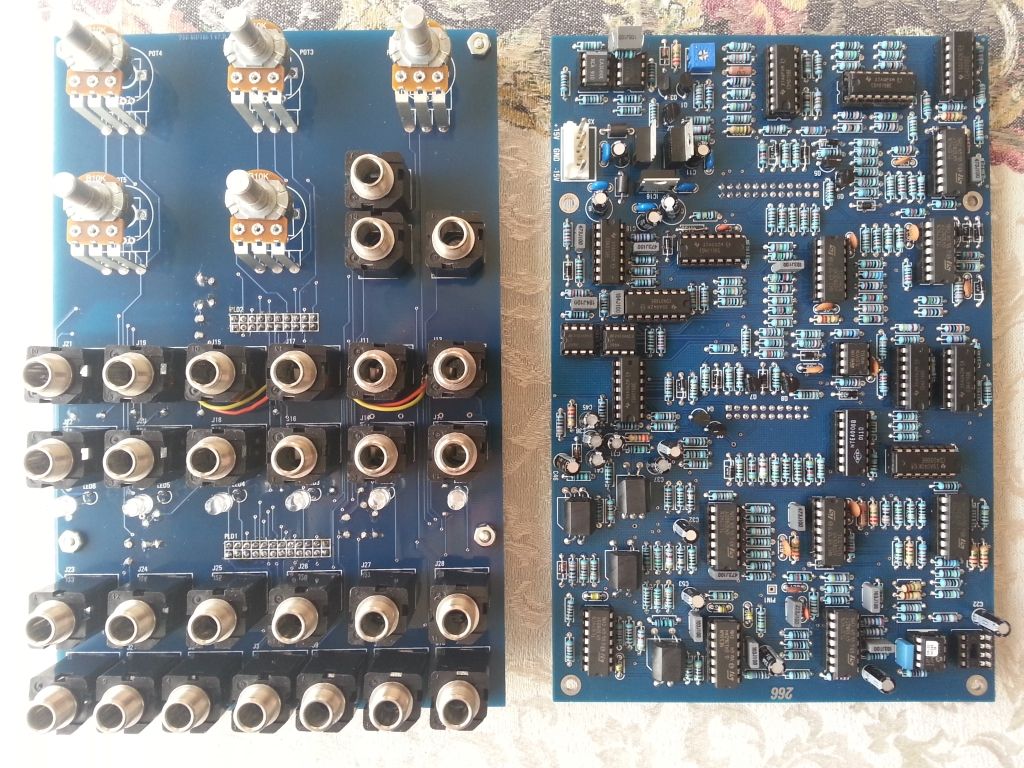Fully populated boards after hours of scotch errr... I mean soldering ..

In the system with blinky ... blinky is good .. it means my house didn't burn down when I clicked the on button. Always a good sign when you DIY.



LOL, that's kind of the point ...aciddose wrote: Definitely an artifact of days before the "digital revolution". A lot like a discrete analog computer circuit.
By the way, there are Arduino variations on this specifically for modular synths. But, so far they suck monkey nuts ... to use a technical term. The only thing that is one for one doable (where you don't run into the sample rate issues) is the random voltage distribution outputs. I'm over simplifying a bit. Obviously the CV portion of an analog synth is typically not diminished by the use of a DAC. But, it kind of hurts the astheticaciddose wrote:Yikes. A majority of that functionality would make a lot more sense powered by a single 8-pin processor and output to a 8-pin DAC. You'd then be left with a lot of multiplexors and s&h buffers but it would be a lot better.
Of course, but again .. the point of this is to do it the old school discrete way.aciddose wrote:A competent designer wouldn't be using something like that as you'd be limited to its "general purpose" design, which goes directly against focusing the design toward meeting specific criteria.
the site is blocked where I'm at right now ...lalo wrote:cool! some link to buy PCBs ?
© KVR Audio, Inc. 2000-2024
Submit: News, Plugins, Hosts & Apps | Advertise @ KVR | Developer Account | About KVR / Contact Us | Privacy Statement